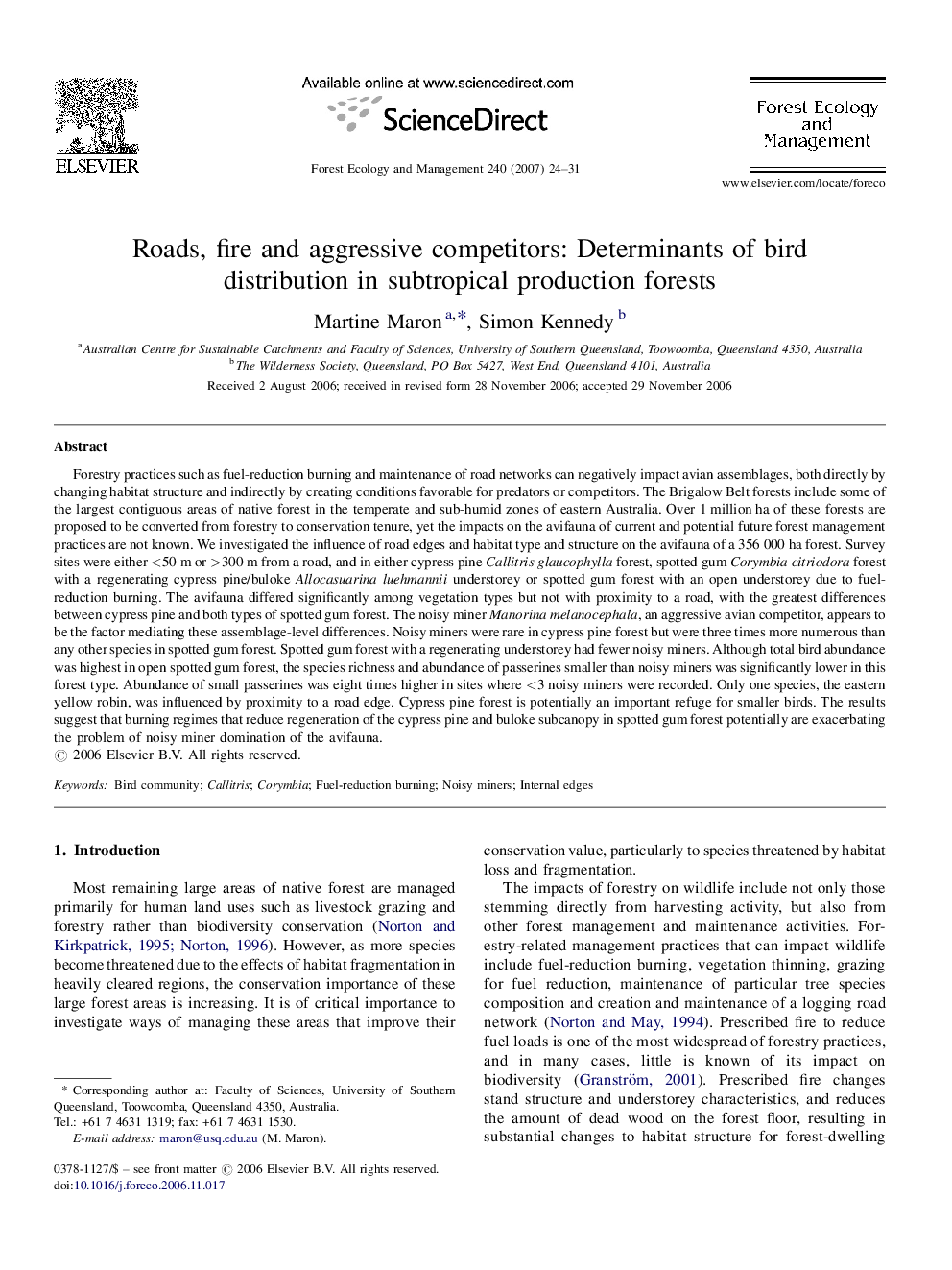| کد مقاله | کد نشریه | سال انتشار | مقاله انگلیسی | نسخه تمام متن |
|---|---|---|---|---|
| 89712 | 159353 | 2007 | 8 صفحه PDF | دانلود رایگان |

Forestry practices such as fuel-reduction burning and maintenance of road networks can negatively impact avian assemblages, both directly by changing habitat structure and indirectly by creating conditions favorable for predators or competitors. The Brigalow Belt forests include some of the largest contiguous areas of native forest in the temperate and sub-humid zones of eastern Australia. Over 1 million ha of these forests are proposed to be converted from forestry to conservation tenure, yet the impacts on the avifauna of current and potential future forest management practices are not known. We investigated the influence of road edges and habitat type and structure on the avifauna of a 356 000 ha forest. Survey sites were either <50 m or >300 m from a road, and in either cypress pine Callitris glaucophylla forest, spotted gum Corymbia citriodora forest with a regenerating cypress pine/buloke Allocasuarina luehmannii understorey or spotted gum forest with an open understorey due to fuel-reduction burning. The avifauna differed significantly among vegetation types but not with proximity to a road, with the greatest differences between cypress pine and both types of spotted gum forest. The noisy miner Manorina melanocephala, an aggressive avian competitor, appears to be the factor mediating these assemblage-level differences. Noisy miners were rare in cypress pine forest but were three times more numerous than any other species in spotted gum forest. Spotted gum forest with a regenerating understorey had fewer noisy miners. Although total bird abundance was highest in open spotted gum forest, the species richness and abundance of passerines smaller than noisy miners was significantly lower in this forest type. Abundance of small passerines was eight times higher in sites where <3 noisy miners were recorded. Only one species, the eastern yellow robin, was influenced by proximity to a road edge. Cypress pine forest is potentially an important refuge for smaller birds. The results suggest that burning regimes that reduce regeneration of the cypress pine and buloke subcanopy in spotted gum forest potentially are exacerbating the problem of noisy miner domination of the avifauna.
Journal: Forest Ecology and Management - Volume 240, Issues 1–3, 15 March 2007, Pages 24–31